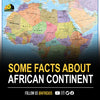George Town, located on the island of Grand Cayman, is the capital city of the Cayman Islands, British West Indies. There has been no archaeological evidence of an indigenous presence in the Cayman Islands before the arrival of the Europeans. The first European sighting of the Cayman Islands was by Christopher Columbus on his fourth and final voyage in 1503. He named the three islands, Grand Cayman, Cayman Brac, and Little Cayman, “Las Tortugas” after the many tortoises he and his men found there. Subsequent Spanish explorers renamed them the Caymanas, after a species of crocodile inhabiting the island.
The Spanish Crown made no efforts to settle the region, and the islands were not thoroughly explored until 1585, when English sea captain Sir Francis Drake arrived. In 1670, the Treaty of Madrid officially transferred possession of the Cayman Islands to Great Britain, and for nearly three centuries the Islands were administered as a dependency of Jamaica, the largest British colony in the West Indies.
Around 1700, George Town became the first permanent settlement on Grand Cayman. Slavery was introduced in 1734 but enslaved Africans were limited in number comparison to other West Indian colonies that had developed extensive rice and sugar plantations. Today people of African ancestry comprise 20% of the islands’ population. In 1831, the Legislative Assembly that now governs Cayman was established in George Town and granted authority over local issues.
For the next century, the Cayman Islands remained a small, mostly self-sufficient outpost of the British Empire. Most of the local economy depended on sailing and fishing. When Jamaica gained independence in 1962, the Cayman Islands chose to remain a colony of the British Crown, a status they hold today. Also, today, George Town’s economy is dependent on finance and tourism with 600 banking companies located within the small city of 40,200 which holds 61% of the Islands’ 65,542 inhabitants.
The finance sector has made George Town and the Cayman Islands internationally famous. The islands rank six internationally in terms of banking assets and George Town has branches of 40 of the world’s 50 largest banks. The town is also a center for worldwide insurance, accounting, and law firms. Financial services represent 55% of the Cayman Islands’ total economy, 40% of all government revenue, and 36% of all employment. Over 100,000 overseas firms have offices in the Cayman Islands.
Grand Cayman is the largest of the three islands, at approximately 22 miles long and up to eight miles at its widest point. It comprises 76% of the entire territory’s land mass and holds 97% of the islands’ population. There are six districts in the territory, and five districts, Georgetown, Bodden Town, West Bay, East End and North Side located on Grand Cayman.
The population of George Town is one of the most diverse in the world with more than one hundred different nationalities 67% of the population calling the community home. Besides Caymanians, Jamaicans 28% and Filipinos, 14% are the largest groups. George Town is a popular port of call for cruise ships bringing tourists to the beaches as well as to the Jimmy Buffett Margaritaville franchise and the Guy Harvey Art Studio, among other sights.
All Caymanian children are entitled to free primary and secondary education but there are also various churches and private institutions that offer educational services from kindergarten to college level. A fleet of share taxis are the major mode of public transportation in George Town.








